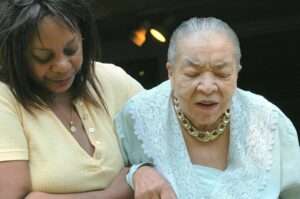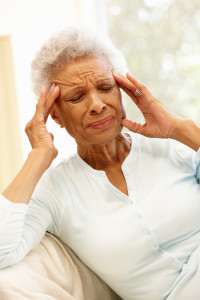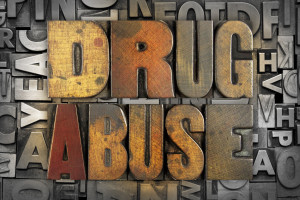More than 100 million American adults suffer from chronic pain, according to the Institute of Medicine1 . Chronic pain — pain that doesn’t go away — can take over your life. It can make you miss work, keep you awake at night, hold you back from leisure activities and even keep you from eating properly. And, it can affect relationships with friends and family. This post”9 Non-Drug Treatments for Chronic or Acute Pain,” highlights one of the most common ailments affecting Americans today.
Pain2 is a signal in your nervous system that something may be wrong. It is an unpleasant feeling, such as a prick, tingle, sting, burn, or ache. Pain may be sharp or dull. It may come and go, or it may be constant. You may feel pain in one area of your body, such as your back, abdomen, chest, pelvis, or you may feel pain all over.
Pain can be helpful in diagnosing a problem. If you never felt pain, you might seriously hurt yourself without knowing it, or you might not realize you have a medical problem that needs treatment.
Chronic or Acute Pain?
There are two types of pain: acute and chronic. Acute pain usually comes on suddenly, because of a disease, injury, or inflammation. It can often be diagnosed and treated. It usually goes away, though sometimes it can turn into chronic pain. Chronic pain3 lasts for a long time and can cause severe problems.
Pain is not always curable, but there are many ways to treat it. Treatment depends on the cause and type of pain. There are drug treatments, including pain relievers. There are also non-drug treatments, such as acupuncture, physical therapy, and sometimes surgery.
There are two types: acute pain and chronic pain. Acute pain lets you know that you may be injured or a have problem you need to take care of. Chronic pain is different. The pain may last for weeks, months, or even years. The original cause may have been an injury or infection. There may be an ongoing cause of pain, such as arthritis or cancer. In some cases, there is no clear cause. Environmental and psychological factors can make chronic pain worse.

Many older adults have chronic pain. Women also report having more chronic pain than men, and they are at a greater risk for many pain conditions. Some people have two or more chronic pain conditions.
Chronic pain is not always curable, but treatments can help. There are drug treatments, including pain relievers. There are also non-drug treatments, such as acupuncture, physical therapy, and sometimes surgery.
What are some non-drug treatments for pain4 ?
There are many non-drug treatments that can help with pain. It is important to check with your healthcare provider before trying any of them:
- Acupuncture involves stimulating acupuncture points. These are specific points on your body. There are different acupuncture methods. The most common one involves inserting thin needles through the skin. Others include using pressure, electrical stimulation, and heat. Acupuncture is based on the belief that qi (vital energy) flows through the body along paths, called meridians. Practitioners believe that stimulating the acupuncture points can rebalance the qi. Research suggests that acupuncture can help manage certain pain conditions.
- Biofeedback techniques use electronic devices to measure body functions such as breathing and heart rate. This teaches you to be more aware of your body functions, so you can learn to control them. For example, a biofeedback device may show you measurements of your muscle tension. By watching how these measurements change, you can become more aware of when your muscles are tense and learn to relax them. Biofeedback may help to control pain, including chronic headaches and back pain.
- Electrical stimulation involves using a device to send a gentle electric current to your nerves or muscles. This can help treat pain by interrupting or blocking the pain signals. Types include
- Transcutaneous electrical stimulation (TENS)
- Implanted electric nerve stimulation
- Deep brain or spinal cord stimulation
- Massage therapy is a treatment in which the soft tissues of the body are kneaded, rubbed, tapped, and stroked. Among other benefits, it may help people relax, and relieve stress and pain.
- Meditation is a mind-body practice in which you focus your attention on something, such as an object, word, phrase, or breathing. This helps you to minimize distracting or stressful thoughts or feelings.

- Physical therapy uses techniques such as heat, cold, exercise, massage, and manipulation. It can help to control pain, as well as condition muscles and restore strength.
- Psychotherapy (talk therapy) uses methods such as discussion, listening, and counseling to treat mental and behavioral disorders. It can also help people who have pain, especially chronic pain, by
- Teaching them coping skills, to be able to better deal with the stress that pain can cause
- Addressing negative thoughts and emotions that can make pain worse
- Providing them with support
- Relaxation therapy can help reduce muscle tension and stress, lower blood pressure, and control pain. It may involve tensing and relaxing muscles throughout the body. It may be used with guided imagery (focusing the mind on positive images) and meditation.
- Surgery can sometimes be necessary to treat severe pain, especially when it is caused by back problems or serious musculoskeletal injuries. There are always risks to getting surgery, and it does not always work to treat pain. So it is important to go through all of the risks and benefits with your health care provider.
Pain Relievers5

T
Pain relievers are medicines that reduce or relieve headaches, sore muscles, arthritis, or other aches and pains. There are many different pain medicines, and each one has advantages and risks. Some types of pain respond better to certain medicines than others. Each person may also have a slightly different response to a pain reliever.
Over-the-counter (OTC) medicines are good for many types of pain. There are two main types of OTC pain medicines: acetaminophen (Tylenol) and nonsteroidal anti-inflammatory drugs (NSAIDs). Aspirin, naproxen (Aleve), and ibuprofen (Advil, Motrin) are examples of OTC NSAIDs.
If OTC medicines don’t relieve your pain, your doctor may prescribe something stronger. Many NSAIDs are also available at higher prescription doses. The most powerful pain relievers are opioids6. They are very effective, but they can sometimes have serious side effects. There is also a risk of addiction. Because of the risks, you must use them only under a doctor’s supervision.
There are many things you can do to help ease the pain. Pain relievers are just one part of a pain treatment plan.
Jay Harold hopes you enjoyed this post, “9 Non-Drug Treatments for Chronic or Acute Pain.” Please Share it and read more about Jay Harold here. Please take this advice from Muhammad Ali and give back to others. “Service to others is the rent you pay for your room here on earth.”




